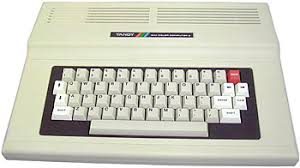I interviewed, a first year teacher in Grade Two French Immersion at a K-6 dual track (French Immersion and English) school. The school was built in the late 1980s and many of the school supplies in the math and science rooms have been there since the school opened. The school has very low staff turn over and most teachers have been on staff for nine or more years. I also chatted with some veteran teachers although I didn’t formally interview them due to it being report card season. I found the issues raised during our interview were the same issues I heard from veteran teachers.
This teacher completed her bachelor of education last year and as a part of which she did her internship (a 12-week placement) at this school, and she was able to return on a temporary contract this year. The teacher stated that she is a new teacher and feels she still has a lot to learn in terms of mastering her curriculum, the pedagogical approaches, meeting the needs of her students, and managing the day-to-day operations of a classroom. As I spoke with her, she was setting aside report cards to spend a few minutes talking with me. She is a classroom generalist with 21 students in her classroom and teaches all curricular areas except for music, which serves as her non-instruction (prep) period.
She stated that she doesn’t use technology that much in math. Mostly it serves to play youtube videos to demonstrate a new skill. In addition to this, applications are used on one of the classroom’s four dedicated iPads to practice addition and subtraction for reinforcement.
For science she stated that she uses technology for videos to reinforce what has been taught in the classroom. Software included Notebook, the software used together with the interactive whiteboards in the school. On the interactive white board, she uses digital tools to replace physical tools that exist in the school but, due to age, have become unreliable. For example, the thermometers she uses in support of a unit on temperature no longer reliably give the temperature. As such, she uses digital thermometers and asks students to interact with them via the interactive white board. She states that it helps students to visually see how the thermometers work and to interact with them. She made a point of stating that the children were the ones interacting with the tools and it was not used entirely by the teacher as a demonstration tool.
These interactive SMART boards are now becoming quite dated. This school was a pilot school when SMART technology was new and an interactive board was installed in every classroom. As this school was on the forefront of implementing this technology, many of the devices were installed in a way that didn’t make sense in light of teacher learning related to this technology later. For example, the board was installed in the furthest corner from internet access and the computers that control the boards live in the corner away from the board. As a plus, this forces teachers to use the boards as they were intended. As an unintended consequence, as the boards age they are increasingly difficult to interact with and often require the teacher to run to the corner of the room in order to navigate what is displayed on the board. Projectors are installed in the middle of the room with a black tube projecting out of the ceiling and as they age the connections are becoming loose, meaning that the projectors slowly sink and have to be re-centered for each use. This is relatively easy, but still a consideration in a classroom full of young learners who are often impatient for the lesson to continue. She joked that technology can be a fantastic tool for learning when it works, stating that as the tools age they become less reliable. In addition, she states that she often creates Power Point presentations for the students to introduce concepts.
She stated that she has only been a classroom teacher for five months, she has not been all the way through the curriculum at this point but anticipated technology allowing students to access information that they might not otherwise be able to access, when studying insects since they wouldn’t be able to have insects of birds in the classroom; while students wouldn’t interact themselves with the insects, they would be able to see others do so.
When asked about technology support at the school, she stated that there was lots of support and believed it to be adequate. She referred to a specialist teacher who was available to help with technical issues. Aside from this, she mentioned that if the specialist teacher was unable to resolve the issue then a work ticket had to be created and that sometimes it took an inordinate amount of time for the issue to be resolved. The Calgary Board of Education has recently moved to an IT support model in which schools are allowed a percentage of a full-time tech based on the number of students in the school. This is a reduction in time from previous years in which an IT specialist was assigned to 3-5 schools and attended to each school on a 5-6 day rotation. As IT time is reduced the load on classroom teachers is increased to solve day-to-day technical issues. She stated that she felt support for pedagogical integration of digital tools was inadequate and wondered if her feeling that it was inadequate was due to her still being new to the position.
She stated that university adequately prepared her for differentiated and multi-disciplinary learning, but that the university had provided inadequate training from a technical standpoint and from a pedagogical standpoint for the ability to plan for the integration of digital tools. She wished that the courses taken at university had dedicated some time to seeking digital resources. She felt that she had stumbled through a lot of aspects of integrating digital tools to this point. She did not, at this point, differentiate between technical aspects of technology integration and digital tools serving pedagogical purposes.
My reflection on the interview: the teacher comfortable with digital tools in the classroom but still uses them mainly in teacher-directed lessons and has yet to integrate the tools for students as a means of expressing their learning. As a new teacher, she is still learning so much about how to do her job that it is difficult to plan for the use of digital tools, too. In my reading, however, I was struck by Cuban et. al.’s writing that both veteran and new teachers experienced the same reluctance to take up digital tools in the classroom; lack of time, lack of training, and lack of support in navigating technical aspects feature in the feedback from both veteran and new teachers.
Cuban, L. Kirkpatrick, H. Peck, C. (2001). High Access and Low Use of Technologies in High School Classrooms. American Educational Research Journal.

